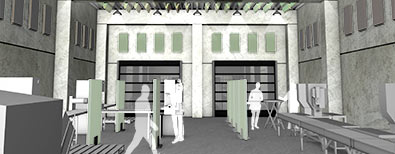R
7 Beiträge in dieser Lexikon KategorieReflection
When sound waves strike a smooth and hard surface, they are reflected (redirected). Soft, open-cell surface materials (e.g. foams) reflect a much lower proportion of the sound waves, but absorb the sound energy instead.
Resonance
Resonance is the tendency of a material to oscillate more readily and at a higher amplitude at certain frequencies - its "natural/resonant frequencies".
Reverberation
Reverberation is the superposition of several reflections of the same sound event. It is a typical phenomenon in enclosed spaces with large sound-hard surfaces and few or no sound-absorbing materials, e.g. carpets, curtains or similar. A high level of reverberation leads to poor speech intelligibility.
Reverberation chamber
A reverberation chamber is a room equipped for acoustic measurements. Its highly sound-reflective walls cause strong reverberation, creating a diffuse noise field with long reverberation times.
Reverberation time
Reverberation time T is an important indicator in room acoustics. It stands for the time that a sound takes to decay by 60 dB after the sound source has stopped emitting.
Room noise
In interior spaces, sound waves are reflected from walls, ceilings and floors. This creates a diffuse sound event consisting of superposed sound waves propagating in all directions.
Room noise absorption
Sound absorber materials installed on the walls and ceiling absorb the incident sound waves, reduce reflection, shorten reverberation time and improve the acoustic properties of the room. Improved acoustic conditions enhance people's sense of well-being.





